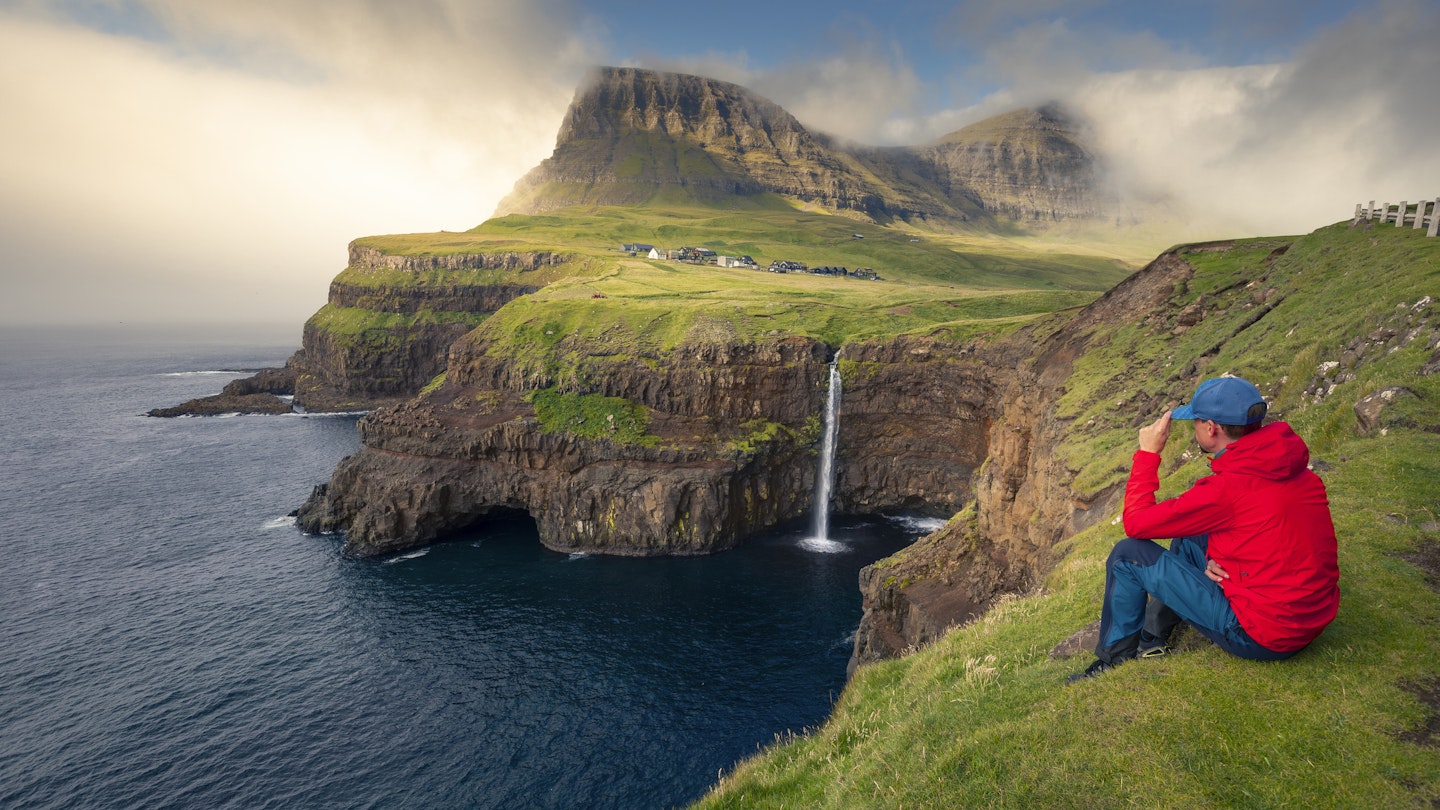Traveling in the Faroe Islands with GoTravelDaily
For a small nation comprising 18 different isles, getting around the Faroe Islands is surprisingly easy. The archipelago is well-connected by ferry and subsea tunnels, featuring the world’s first undersea roundabout. The roads are paved throughout the islands, making them suitable for various vehicles, including cyclists. Moreover, public transport options abound, connecting communities with city and rural buses, and even a helicopter service for locals and visitors.

For Maximum Flexibility, Rent a Car
The journey truly becomes the destination when driving around the Faroe Islands. If you are ready for the adventure, you will be rewarded as you navigate switchback roads adorned with stunning views of sea stacks, islands, and picturesque villages. Renting a car is the most time-efficient option, especially for visitors on short trips, providing the flexibility to change plans easily. In fact, the Faroe Islands boast several scenic drives known as Sóljuleiðir (buttercup routes), clearly marked with the country’s national flower.
Car rental services are available at the airport and in Tórshavn, and booking ahead is advisable. Electric cars can be rented from select companies such as Berg Hestar and 62North.
Driving Tips: Watch Out for Sheep!
Before hitting the road in the Faroe Islands, be mindful of a few important driving rules. Drive on the right, keep your lights on at all times, and refrain from using your phone or driving under the influence. Drive cautiously, especially as sheep often wander onto the roads, especially during spring when lambs are more active. If you happen to hit a sheep, you will need to contact the police to report the incident. Fortunately, farmers can claim insurance for any losses.
When parking in Tórshavn, Klaksvík, or at Vágara airport, remember to use a parking disc to indicate what time you parked, as parking regulations do apply.

Catch the Ferry for a Budget-Friendly Cruise
Local ferry routes in the Faroe Islands allow you to take your car while exploring for as little as 15 kr per trip. These routes are publicized, with frequency varying seasonally. A multi-day travel card covers ferries and buses, although the ferry to Mykines is not included. Typically, you only pay for one-way trips, making it an affordable means of travel.
Remember to Pay Tolls on Undersea Routes
The Faroe Islands feature four undersea tunnels that provide easy navigation. All tunnels require toll payments, with the most expensive being the undersea roundabout, Eysturoyartunnilin. You can conveniently pay the fee online or at petrol stations, or add the tunnels to your car rental bill for payment upon return.

On a Budget? Bus Routes Are Your Savior
The Faroe Islands boast a network of blue coaches that service rural areas, while free red buses operate in towns. With a little planning, these buses can greatly reduce your travel costs. There is a direct bus route from Vágara airport into Tórshavn. The main bus routes in Tórshavn enable easy day trips to key attractions, including Gásadalur.
Helicopter Transport in the Faroe Islands
Helicopter transport is heavily subsidized in the Faroe Islands for local residents, though it has become less accessible for tourists. However, you can book a one-way helicopter flight to larger towns, including Klaksvík and Tórshavn, for approximately 645 kr. Be aware of the timetable and advance booking restrictions.

Can You Cycle in the Faroe Islands?
Cycling in the Faroe Islands is a fantastic experience, with paved roads, stunning hills, and breathtaking scenery. Bike rental is available in Tórshavn, offering mountain bikes and e-bikes. Although you can take your bike on buses for free if there’s space, biking through tunnels can require a bit of nerve.
Accessible Transportation in the Faroe Islands
Transportation options in the Faroe Islands for those with mobility challenges are somewhat limited. However, certain hotels, restaurants, and cultural centers are accessible. City buses accommodate wheelchairs, and ferries have elevators and ramps, ensuring some level of accessibility.





